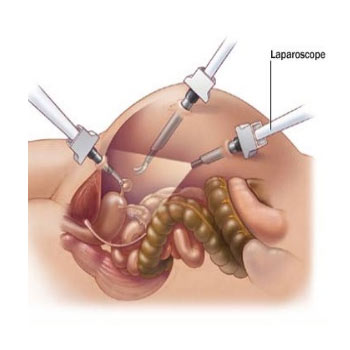What Are Laparoscopic Procedures?
Laparoscopic procedures, also known as minimally invasive surgeries, are a type of surgical technique performed using small incisions rather than the larger cuts needed in traditional open surgeries. This advanced method employs a laparoscope—a long, thin tube equipped with a high-resolution camera and high-intensity light—allowing surgeons to view the inside of the abdomen and pelvis on a video monitor.
Understanding the Laparoscopic Technique
During a laparoscopic procedure, the surgeon makes a few small incisions, typically around 0.5 to 1.5 cm in length. Through these incisions, the laparoscope and surgical instruments are inserted. The laparoscope sends images from inside the body to a monitor, giving the surgeon a clear, magnified view of the internal organs and tissues. This allows for precise surgical interventions with minimal disruption to the surrounding tissues.
Common Laparoscopic Procedures
Laparoscopic techniques are utilized in a variety of medical specialties, including gastroenterology. Some common laparoscopic procedures include
Laparoscopic Cholecystectomy
This is the surgical removal of the gallbladder, often due to gallstones causing pain or infection. It is one of the most frequently performed laparoscopic procedures.
Laparoscopic Appendectomy
Removal of the appendix is usually necessitated by appendicitis. The laparoscopic approach allows for a quicker recovery compared to open surgery
Laparoscopic Hernia Repair
This involves the repair of hernias, such as inguinal or hiatal hernias, using a mesh to reinforce the weakened area
Laparoscopic Colectomy
This procedure involves removing part or all of the colon, often due to conditions like colon cancer, diverticulitis, or inflammatory bowel disease
Laparoscopic Nissen Fundoplication
This is used to treat gastroesophageal reflux disease (GERD) by wrapping the upper part of the stomach around the lower esophagus to strengthen the sphincter and prevent acid reflux.
Benefits of Laparoscopic Procedures
The rise in popularity of laparoscopic surgeries is due to the numerous benefits they offer over traditional open surgery, including:
- Reduced Pain and Discomfort: Smaller incisions mean less trauma to the body, resulting in less postoperative pain and a reduced need for pain medication
- Shorter Hospital Stay: Patients undergoing laparoscopic procedures often have shorter hospital stays, sometimes just a day or two, compared to a week or more for open surgery
- Faster Recovery: Due to the minimally invasive nature of the surgery, patients typically experience quicker recovery times and can return to normal activities sooner
- Lower Risk of Infection: Smaller incisions are less likely to become infected compared to larger, open surgical wounds
- Minimal Scarring: The tiny incisions used in laparoscopic surgery result in much smaller scars, which are cosmetically more appealing and cause less post-surgical pain
Laparoscopic procedures represent a significant advancement in surgical techniques, offering many benefits over traditional open surgery. They provide a safer, less painful, and quicker recovery option for many patients requiring surgical intervention. If you or a loved one are facing surgery, it's important to discuss with your healthcare provider whether a laparoscopic approach is suitable for your specific condition. Understanding the risks, benefits, and what to expect during recovery can help you make an informed decision and ensure the best possible outcome.

